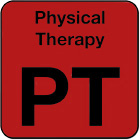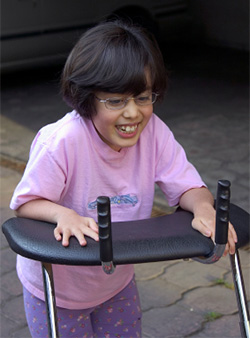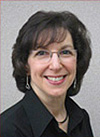What are some of the most common related services used in schools?
Page 7: Physical Therapy Services
 Physical therapy as a related service is designed to help students with disabilities to improve their functional skills in a variety of school settings, including the classroom, gym, and playground. Students who might benefit from school-based physical therapy services may have disabilities such as cerebral palsy, Down syndrome, or developmental delay that affect their movement or posture. Students who might benefit from PT services may experience difficulty:
Physical therapy as a related service is designed to help students with disabilities to improve their functional skills in a variety of school settings, including the classroom, gym, and playground. Students who might benefit from school-based physical therapy services may have disabilities such as cerebral palsy, Down syndrome, or developmental delay that affect their movement or posture. Students who might benefit from PT services may experience difficulty:
cerebral palsy
glossary
Down syndrome
glossary
 Walking or balancing
Walking or balancing- Maintaining a good seated position at their desks
- Carrying materials (e.g., books, lunch tray)
- Opening a locker
- Maintaining energy for full participation in activities
- Navigating the school environment (e.g., using canes, a walker, or a wheelchair)
- Managing the playground or gym equipment
- Transferring (e.g., from a walker to a toilet, from a desk seat to a standing position)
- Getting from one place to another during allotted transition times
- Participating in routine physical education activities
Qualified Providers:
Physical therapists (PT) or physical therapist assistants (PTA) are required to hold both national and state licenses. PTs must have completed an accredited graduate degree program. PTAs must have graduated with an associate’s degree from an accredited PTA program and must work under the supervision of a PT.
Roles: Physical therapists work with students who have problems with mobility or gross motor skills (e.g., running, jumping, galloping, hopping, and ball skills) that affect their success in classroom or school-related activities. The PT’s or PTA’s primary role is to ensure that students with disabilities can physically access their educational and school-related settings and participate in the associated activities.
Academics
- Work with teacher to develop classroom seating options, and to promote posture, balance, and accessibility
- Suggest ideas to families for creating appropriate physical environments for homework
Non-Academics
- Develop evacuation plans (e.g., fire, crisis) for students with physical disabilities
- Develop health and wellness programs for students with and without disabilities
- Train staff in methods to safely lift, transfer, handle, and position these students
- Teach staff the purpose and functional use of any of a student’s specialized equipment (e.g., wheelchairs, walkers, orthoses)
Extra-curricular Activities
- Collaborate with teachers who conduct after-school activities (e.g., band, clubs) so that students’ needs are met across all environments
- Work with students in job training sites and community settings to promote effective access to those environments
- Help students who are in the transition process to prepare for their physical needs in the next environment (e.g., high school, college, career)
National Professional Organization: American Physical Therapy Association (https://www.apta.org/ and its section on Pediatrics ( https://pediatricapta.org/)

Nore is a second-grade student in a general education classroom who has cerebral palsy. His IEP goals are:
- Maintaining his balance in the school environment
- Navigating the school environment independently
Watch the videos below to see how Donna Schlappi, Nore’s PT, works with him to achieve these goals.
In the first video, she first helps Nore practice his walking balance by carrying a tray with objects on it. In this way, she hopes to help Nore learn to carry a tray with food in the lunchroom (time: 2:47).
Transcript: Nore Practices His Walking Balance
Therapist: Here we go, sweetheart. We’re going to walk through there, okay? And, look, they’re mixed up. Good job. Oh, very nice. We usually have trouble with those big ones. That was very good. Good. Good job. Oh, very good. All right. Let’s work on carrying your tray a little bit, okay, ’cause we’re going to go to the cafeteria again today. I got one of the hard ones. We’re actually going to try using a couple of the Styro…we have trouble because of the Styrofoam ones that are very flimsy, so he and I work with a harder tray. We’re going to work on stop-and-go. Good job. Okay, do you want the weights first or the ball?
Young boy: The weights.
Therapist: The weights, okay. We are working on balance while carrying our tray. Can you stop for me? Stop, stop. Good stopping. Stopping is sometimes difficult with his balance, so we work on stop-and-go activities. Let’s go to the next square. Good job. And stop. Good.
So now we are working on balancing a ball on the tray so that this will transfer to his carrying his lunch tray with things that may tip off. Good job, very good. Good job and again… Very good. One more square. Good job. Okay.
Get your chocolate. Good job. Then we’ll head right over and grab a tray. Okay, this is it. Looks like turkey and spinach or ham and sweet potatoes or…stuffing, I’m sorry.
Young boy: Do I do it like this?
Therapist: Yup. Can you get underneath it? Oh, no. Go ahead and grab one. You’re good, excellent. Okay, go ahead and put it on your tray. Good, there you go. Then would you like the sweet potatoes or the green beans?
Young boy: Green beans.
Therapist: Okay, now I’d like to go all the way down to your where your normal seat is.
(Close this panel)
In the next video, watch as Nore works on his balance during a regular P.E. class with the ongoing support and encouragement of his PT (time: 0:23).
Transcript: Nore works on his Balance during P.E. Class
Therapist: Okay, buddy, we are going to head down to PE with your friends. Okay.
Now you’ll see him running down the halls.
Stereo in Gym: “Slide to the left. Slide to the right. Crisscross. Crisscross. Now jump real smooth.”
the PT's Corner
Listen as Marcia Kaminker describes physical therapy in the school environment.

Marcia K. Kaminker, PT, DPT, MS, PCS
Physical Therapist,
Department of Student Services
South Brunswick School District
South Brunswick, NJ
Working in the natural environment (time: 1:19)
Working on a team (time: 0:43)
Transcript: Marcia K. Kaminker, PT, DPT, MS, PCS – Determining the need for services
Students who have disabilities that affect their movement or their posture, or their ability to sit in a classroom chair may benefit from school based PT. It’s the function in the school environment and not the medical diagnosis that determines the need for services. Very often we see referrals because a student has a diagnosis. So my question always is, but how does that affect their function in the school environment? We do see a lot of students with medical diagnoses like cerebral palsy, or developmental delay, or Down syndrome, or traumatic brain injury, or autism spectrum disorders, or various progressive neuromuscular disorders, or even developmental coordination disorder. So students may have a variety of functional problems, for instance, they may have difficulty keeping pacing with their classmates when they’re walking around the school or going up and down the stairs. They may be unable to propel their own wheelchairs, or they may fall frequently when they’re playing outside on uneven terrain, or have difficulty navigating the playground equipment, or they might be limited in their ability to participate in their gym class, in physical education.
Transcript: Marcia K. Kaminker, PT, DPT, MS, PCS – Working in the natural environment
It’s important that intervention, whenever possible, should occur in the natural environment, in the setting in which it will be used, because motor learning research tells us that intervention that is provided in natural context is much more readily generalized to real life situations. PT may work with the student to improve mobility in the school environment, either by walking or by wheelchair, in all the various settings in the school, in the classroom, in the hallways, the cafeteria, the gym, on stairs, curbs, ramps, bus steps, and on outdoor terrain. The PT may work with the student to improve gross motor skills that will enable him or her to participate in the educational program, including in the phys. ed. program and to improve motor skills that will help in outdoor play during recess. In addition, they may focus on improving postural control to allow the student to be able to sit for extended periods of time in the classroom. They may work on balance and coordination, body awareness, and muscle strengthening, to the extent that it contributes to function.
Transcript: Marcia K. Kaminker, PT, DPT, MS, PCS – Working on a team
School-based PTs need to become effective members of a team, and they need to be able to accept the fact that their role is to support the educational program. In other settings, such as in inpatient rehab centers, PT plays a much more central role, but in schools it’s really the classroom teacher not the PT who’s the central figure on the team. That can be an adjustment for some of us. PTs are also accustomed to providing direct hands on service, but in the school environment a lot of our intervention is indirect through consultation and that change in focus can be challenging.